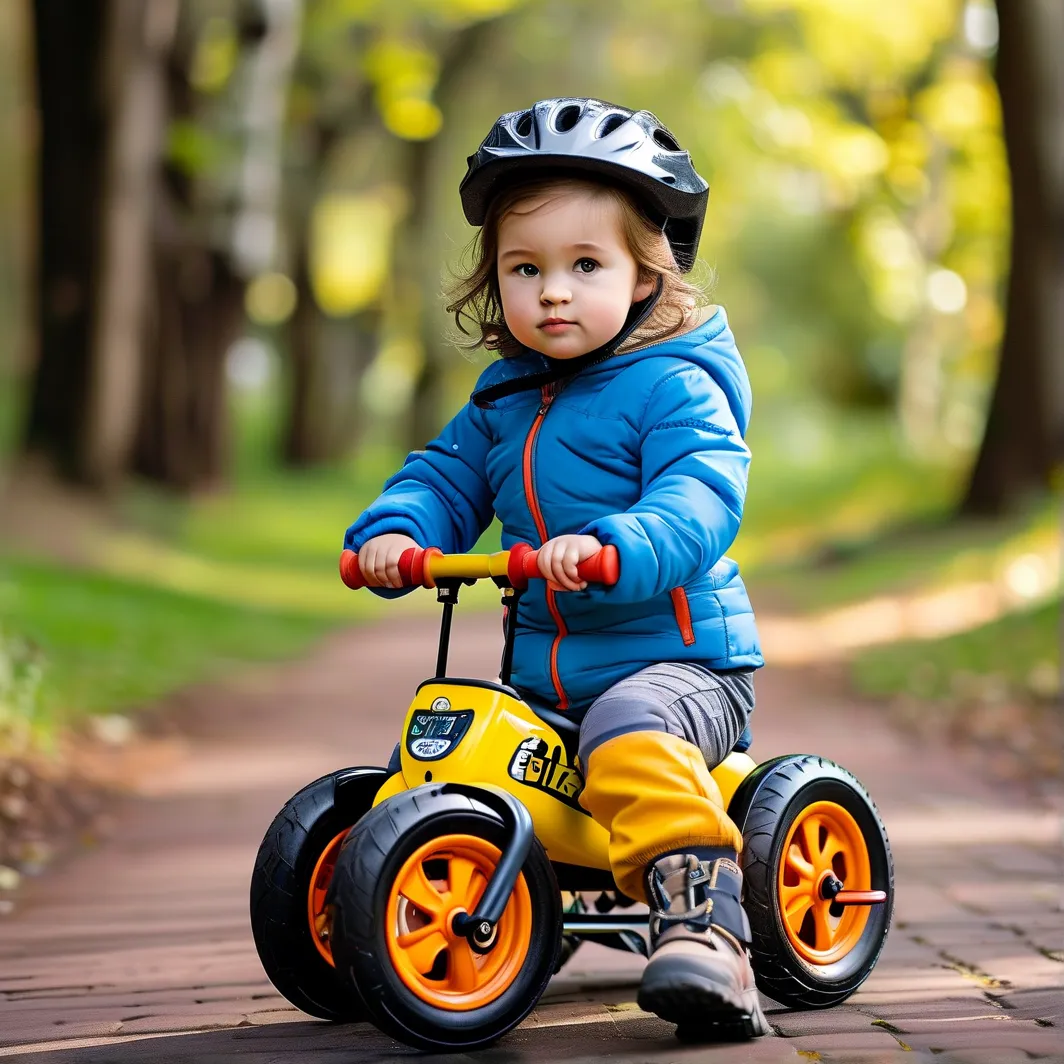When parents begin exploring mobility options for their newly walking toddlers, the choice often narrows down to two popular options: infant push bikes and parent-assisted toddler trikes. Both aim to support early physical development, but understanding their distinct features helps caregivers make informed decisions tailored to their child’s needs.
Key Differences in Design and Functionality
Infant push bikes (also called balance bikes) are minimalistic, pedal-free vehicles designed for independent use. With a low center of gravity and handlebars matching a child’s height, they encourage self-propulsion through feet-to-ground movement. Brands like Strider and WOOM emphasize lightweight frames (typically 6-8 lbs) to prevent fatigue.
Parent-assisted trikes, such as Radio Flyer’s Deluxe Steer & Stroll, feature a three-wheel design with footrests, safety harnesses, and removable push handles. These allow caregivers to steer while toddlers acclimate to sitting on a moving vehicle. Some models include sun canopies and storage baskets for practicality.
Developmental Benefits Compared
Balance Bikes:
A 2020 study in Pediatric Physical Therapy found that children using balance bikes developed dynamic balance skills 21% faster than those using training wheels. The act of “scooting” strengthens core muscles and improves coordination, preparing toddlers for eventual pedal bike transitions. Occupational therapists often recommend these for building confidence in cautious walkers.
Parent-Assisted Trikes:
These excel in social engagement and joint attention development. The shared control mechanism allows parents to narrate movements (“We’re turning left!”), reinforcing language skills. A survey by Safe Kids Worldwide notes that 68% of parents value trikes for introducing road safety concepts in controlled environments.
Safety Considerations
Push bikes prioritize ground contact—toddlers instinctively use their feet to stabilize, reducing tipping risks. However, the American Academy of Pediatrics (AAP) advises against using them on uneven terrain until age 2.5 due to underdeveloped reflexes.
Trikes with 5-point harnesses minimize fall risks but require vigilant adult supervision. Consumer Reports testing highlights the importance of checking wheelbase width—models narrower than 14 inches may wobble during sharp turns. Both options should meet ASTM F963 toy safety standards.
Age and Developmental Stage Alignment
- 12-18 months: Parent-assisted trikes are ideal for tentative walkers needing postural support. Adjustable seat recline positions (like those on Schwinn Roadster models) accommodate shorter torsos.
- 18-24 months: Transitional phase where some toddlers benefit from hybrid use—trikes for family walks and push bikes for backyard exploration.
- 24+ months: Most children gain sufficient leg strength and balance for independent push bike use, per CDC motor skill guidelines.
Cost vs Longevity Analysis
Entry-level push bikes range from $50-$120, with premium models lasting until age 5. Trikes average $80-$180 but often become outgrown by age 3. Resale data from Mercari shows push bikes retain 60% value versus 40% for trikes due to longer usability windows.
Practical Scenarios: Which to Choose?
- Urban families with limited outdoor space may prefer compact push bikes like the Banana Bike GT for apartment-friendly maneuvering.
- Frequent walkers visiting parks or trails benefit from trikes with all-terrain tires and parent controls (e.g., Joovy Tricycoo).
- Sensory-seeking toddlers who crave speed often adapt faster to push bikes’ instant movement feedback.
Neither option is universally superior—the decision hinges on matching the child’s physical readiness and family lifestyle. Push bikes foster autonomy ideal for adventurous personalities, while trikes provide security for cautious learners needing gradual exposure. Consulting pediatric physical therapists can further personalize choices based on individual motor skill assessments. Always verify product certifications (JPMA, ASTM) and trial both styles at local retailers when possible to observe child reactions firsthand.
Sources: American Academy of Pediatrics (2023 Toy Safety Guidelines), CDC Milestone Checklists, Pediatric Physical Therapy Journal Vol.32(4)




Leave a Reply